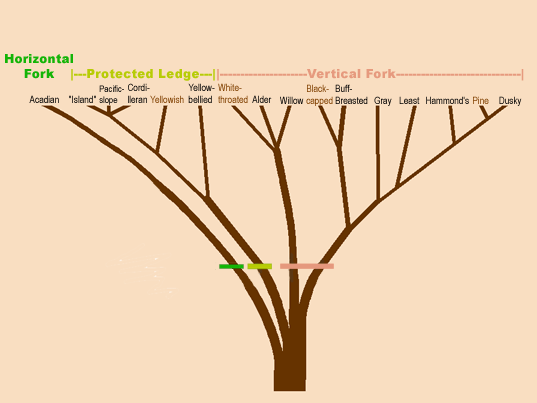
The Acadian Flycatcher places its nest, rather like a vireo, between the two tynes of a horizontal fork, usually in the forest understory. No other North American flycatcher suspends its nest from a horizontal fork.
Nests of Branch 2 species are placed on protected ledges, including large roots of overturned trees, cliff ledges, and the eaves of houses. They resemble the phoebes in their use of eaves for nesting. The Yellow-bellied Flycatcher was infamous with the egg collectors of the 19th century, for their nests were hidden in the dense moss amid the jumble of uprooted trees in the boreal forest.
Nests of the other species (Branches 3 and 4) are more prosaic, being supported mostly be vertical branches and twigs. The Gray Flycatcher often places its nest close to the trunk of a small tree, while the Hammond's sometimes uses the top of a branch, like a pewee. Click here to continue the story of Empidonax evolution with a look at nest material.